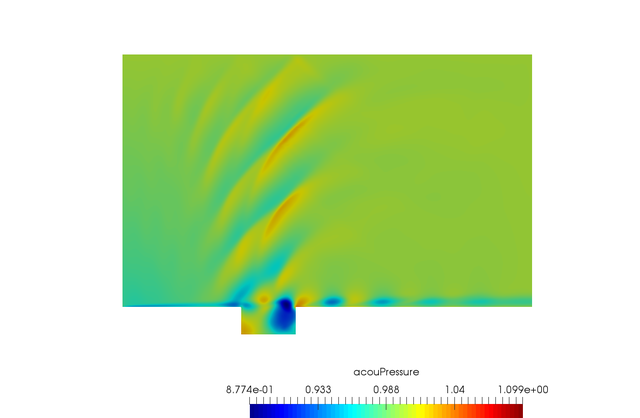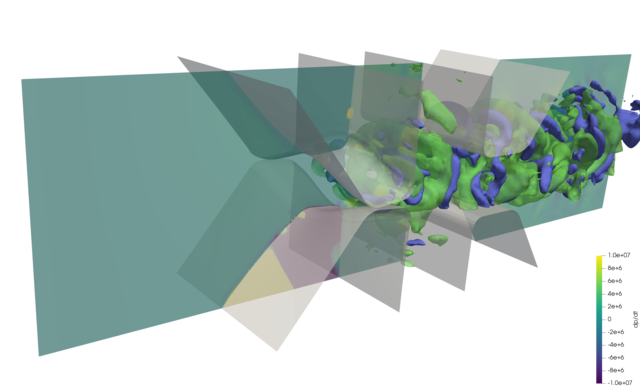Teaching Aeroacoustics and Vibroacoustics

Generated sound of a cavity
The students will learn the physical mechanism of structural vibration and flow-induced sound. They will have mathematical models at hand for analytical estimations as well as for numerical simulation. There are many applications of vibrating structures and flow-induced sound in daily life: dynamic excitation of machines, aircraft noise (jet engine), traffic noise (flow around cars, exhaust noise), musical instruments (wind instrument, organ pipe), and more. The course "Aeroacoustics" will concentrate on the following topics of flow-induced sound:
• We revisit the fundamental equations of fluid dynamics and acoustics.
• We will explain the aeroacoustic analogies of Lighthill, Curle, and Ffowcs Williams & Hawkings in-depth.
• Furthermore, we sketch the idea of acoustic perturbation equations.
• During the course, we will derive analytic sound propagation models applying Green's functions and highlight the numerical sound propagation model using the finite element method.
• Continuously, we will demonstrate the applicability to real world problems like the edge tone effect, the noise emitted by a car side mirror, airfoils, rotor blades of ventilation systems, human phonation.

Sound sources of human phonation
The topics on fluid-structure-acoustic interaction will be taught in the first and second "Multiphysics" course. Students will learn to model, simulating, analyzing these physical systems, and are provided with a solid background using numerical methods.
